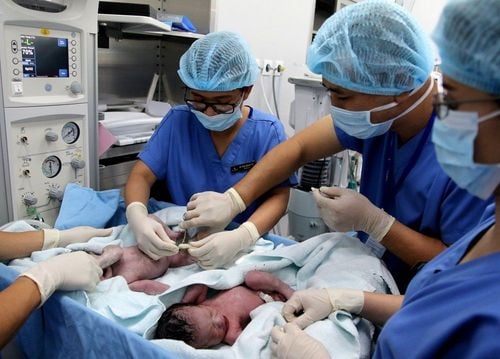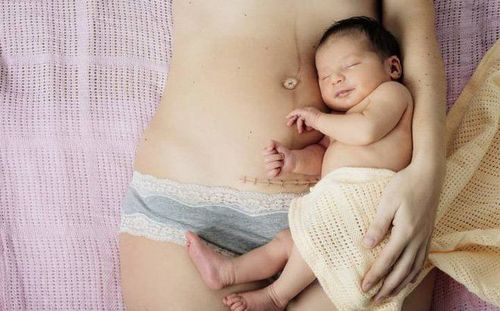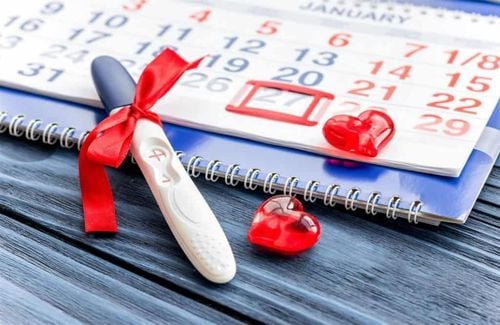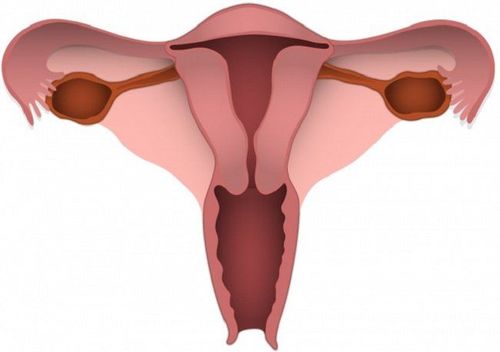This is an automatically translated article.
Perineal incision and suturing during vaginal birth usually occurs during a vaginal birth, which is a method of cutting the skin from the vaginal side down to the anus (perineal area) to create space for the baby to have can get out more easily. This method helps the labor process go faster and limits vaginal tearing caused by pushing and avoids problems later for the mother.1. What is an episiotomy?
The perineum is a small area between the anus and the vulva in women. Anatomically, the perineum is the area between the pubic bone and the coccyx, including the perineum and surrounding structures. There are many different ways to define it, so in some cases the area around the anus is also part of the perineum. The perineum is also an area that helps in sexual arousal in both men and women.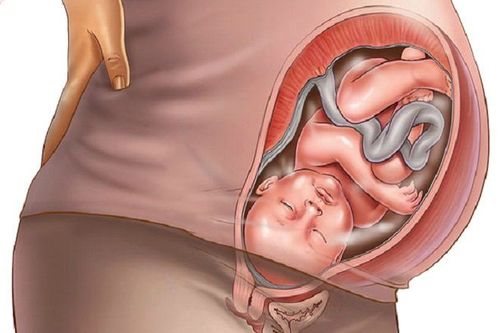
Rạch tầng sinh môn khi sinh con đầu tiên
The reason why pregnant women have to make an episiotomy during normal delivery is because:
The mother's perineum is hard, thick, narrow, the vulva and perineum are edematous due to prolonged labor, many examinations. In maternal diseases that need to be delivered quickly to ensure the mother's health: such as heart failure, pre-eclampsia, high blood pressure. The fetus has an index of total enlargement or a large head. The fetus has a number of abnormal windows such as: occipital, face, and breech. Premature pregnancy, the fetus is at risk of asphyxiation. Perineal incision when doing procedures such as forceps, suction, butt delivery...
Trắc nghiệm: Chỉ khâu tầng sinh môn sẽ tự tiêu sau bao lâu?
Khâu tầng sinh môn sau sinh bằng đường âm đạo là thủ thuật sản khoa đơn giản nhanh chóng, nhẹ nhàng. Chỉ tự tiêu khâu tầng sinh môn là loại chỉ khâu tầng sinh môn cho sản phụ sau sinh, sẽ tự biến mất sau 1 thời gian. Nhiều chị em thắc mắc không biết “chỉ khâu tầng sinh môn sẽ tự tiêu sau bao lâu?”. hãy cùng trả lời nhanh 3 câu hỏi trắc nghiệm sau.2. Steps of incision and suture of the perineum during vaginal birth
2.1. Preparation for implementation Performers: Midwives and Obstetricians. Means, supplies, medicine: Perineal cutting kit (including 1 straight scissors, 1 needle pairing pliers, 1 tweezers, 1 antiseptic forceps, 1 cup containing antiseptic solution); sutures (vicryl rapid thread or catgut thread, plain, ...); antiseptic solution; 1 syringe 5ml; Lidocaine 2%. Patient: Check general condition, pulse, blood pressure, vaginal blood. Make sure that the placenta is not left, the uterus is contracted well, and the vagina is not torn before the perineal stitches are carried out. 2.2. Steps to take Step 1: Disinfect the perineal vulva area.Step 2: Anesthetize the perineum to be cut with 2% lidocaine. If the patient has already received an epidural to relieve pain, there is no need for local anesthesia anymore.
Step 3: The doctor conducts episiotomy.
The woman is lying in the normal delivery position, during uterine contractions, when the perineum and vulva is distended or when pulling forceps, the suction cup uses a straight and sharp scissors to cut the perineum at 450 degrees at 7 o'clock from the edge posterior part of the vulva (usually cut on the right side of the mother). Cut 2-4 cm depending on the extent needed. This incision cuts the vulvar sphincter, the superficial and deep transverse muscle, along with the vaginal wall and perineal skin. Do not cut the perineum deep into the levator anal muscle. Do not cross the 9 o'clock position to avoid entering the easy bleeding organs such as Bartholin's glands, spongy tissues of the vulva and also do not cut along the midline to avoid central fibrous knots of the anal region, anal sphincter, and rectum colon. Usually one side is enough, if necessary, both sides are cut.
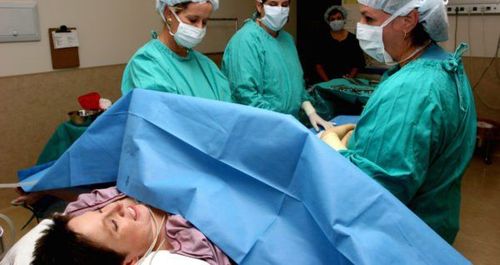
Tiến hành rạch tầng sinh môn
Suture the perineum when it is certain that the placenta has passed, there is no placenta left, the uterine atony and the trauma of the genital tract have been controlled. If the episiotomy does not tear further, we will perform 3 squeezing stitches: The first squeezing stitch starts from 0.5 - 1cm above the internal vaginal cut to the base of the outer hymen; stitch all the way to the bottom pulling the two edges of the original vagina of the diaphragm together. Second suture: starting from the top of the external episiotomy to the base of the internal hymen. Sew from the subcutaneous part to the base of the inner hymen. Stitches under the skin or in the skin to make the perineal scar small and soft. If the tear is deep in the vagina and the tear is deep in the perineum, we need to have a separate stitch. Skin sutures should be sutured inside the skin with vicryl rapid thread to keep the scar small and soft. 2.3. Monitor and manage complications Track:
Keep sutures clean and dry. Suture removal on day 5 if suturing the skin with non-absorbable sutures. If the suture does not heal due to infection, it must be treated on the spot, not sutured immediately. Treatment of complications:
Bleeding due to gaps between suture layers: suture the layers to become seamless and press against each other. Infection: Interstitial episiotomy, wash, local and systemic antibiotics. Sanitize, wash with antiseptic solution, use antibiotic treatment
3. How to take care of the perineal stitches during a vaginal birth

Chăm sóc sản phụ sau sinh thường theo hướng dẫn của bác sĩ
Because Therefore, proper care of the perineal suture after childbirth is something every woman needs to know to avoid infection and speed up the healing of the rectal and pelvic muscles. Here are some effective remedies to help you relieve pain and speed up the healing of stitches:
Perineal stitches can be very painful, so you can apply cold to help relieve pain and reduce inflammation. You can sit in a tub of cold water, then dry the stitches with a clean towel. Painkillers are the remedy for you. You can ask your doctor to prescribe a pain reliever that will not affect your breast milk. If you have pain while sitting, you should sit on an air mattress that can adjust the inflation to make you more comfortable. Many people will experience pain during sex for the first few months. If this is the case, you should tell your husband and wait until the episiotomy stitch is completely healed. Keep stitches clean and dry as advised by your doctor, especially after urinating. If bowel movements cause you a lot of pain, you should take a stool softener first. Keep the suture area dry and clean. You should wash the area quickly with a shower and pat dry gently. Do not douche, use tampons, or have sex until your doctor tells you to. You can also limit vigorous exercise to avoid damage to the wound. Wipe the area carefully from front to back to reduce the risk of infection from the anus. You should eat a nutritious diet, drink plenty of water as usual unless your doctor tells you otherwise; Get more rest and only light activity. Do pelvic floor exercises more often to help blood flow and promote wound healing. Change tampons often and make sure not to damage the stitches. It is important that you rest for the wound to heal quickly. You can move around the house to increase blood circulation to the perineal area and help the stitches heal faster. Perineal tear during childbirth not only causes pain for the mother but also affects her health later in life. In order to make the labor process easier, Vinmec International General Hospital now has methods of "Painless delivery" - helping mothers to have a gentle labor and healthy babies.
Please dial HOTLINE for more information or register for an appointment HERE. Download MyVinmec app to make appointments faster and to manage your bookings easily.






